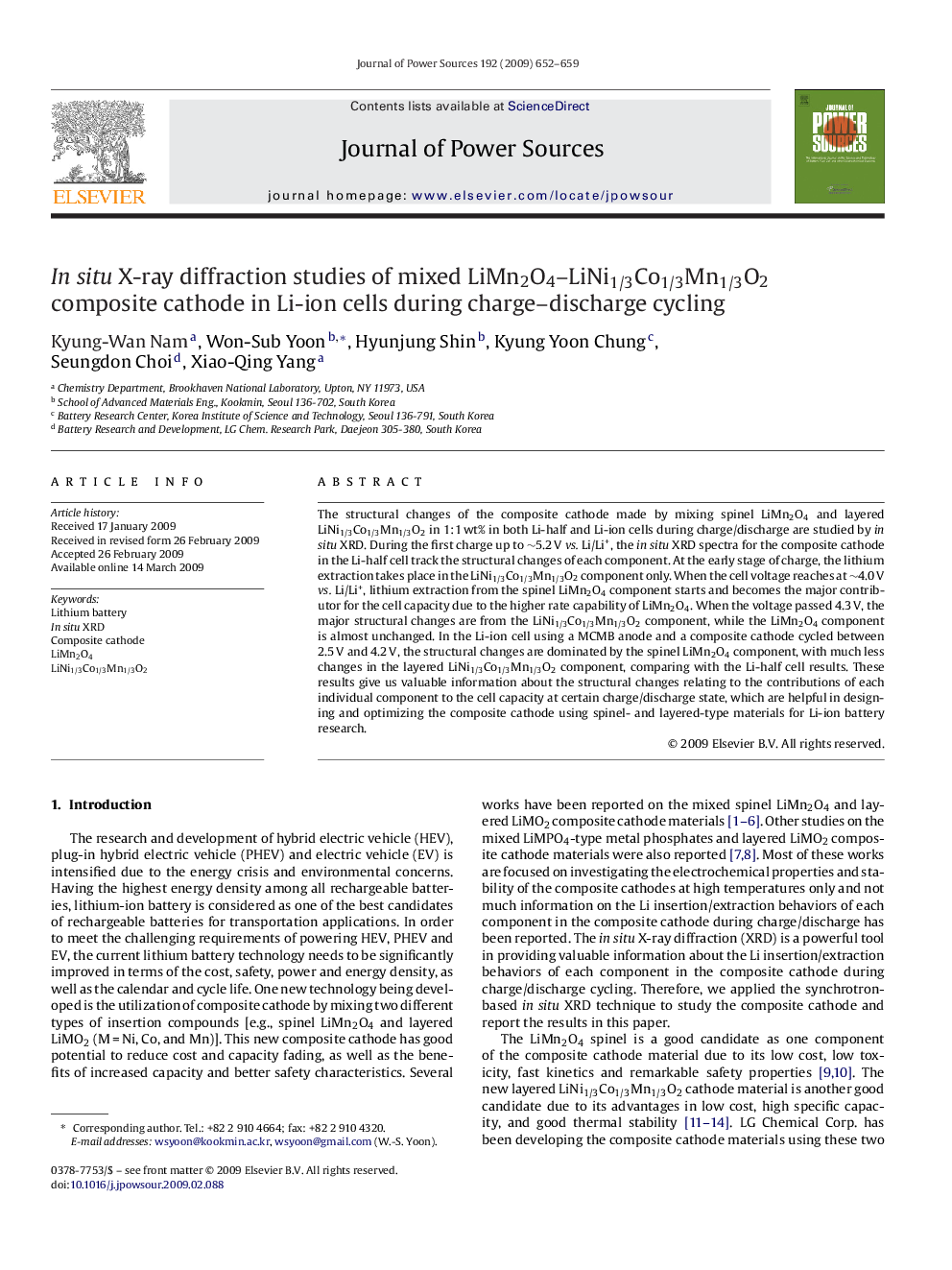| Article ID | Journal | Published Year | Pages | File Type |
|---|---|---|---|---|
| 1294151 | Journal of Power Sources | 2009 | 8 Pages |
The structural changes of the composite cathode made by mixing spinel LiMn2O4 and layered LiNi1/3Co1/3Mn1/3O2 in 1:1 wt% in both Li-half and Li-ion cells during charge/discharge are studied by in situ XRD. During the first charge up to ∼5.2 V vs. Li/Li+, the in situ XRD spectra for the composite cathode in the Li-half cell track the structural changes of each component. At the early stage of charge, the lithium extraction takes place in the LiNi1/3Co1/3Mn1/3O2 component only. When the cell voltage reaches at ∼4.0 V vs. Li/Li+, lithium extraction from the spinel LiMn2O4 component starts and becomes the major contributor for the cell capacity due to the higher rate capability of LiMn2O4. When the voltage passed 4.3 V, the major structural changes are from the LiNi1/3Co1/3Mn1/3O2 component, while the LiMn2O4 component is almost unchanged. In the Li-ion cell using a MCMB anode and a composite cathode cycled between 2.5 V and 4.2 V, the structural changes are dominated by the spinel LiMn2O4 component, with much less changes in the layered LiNi1/3Co1/3Mn1/3O2 component, comparing with the Li-half cell results. These results give us valuable information about the structural changes relating to the contributions of each individual component to the cell capacity at certain charge/discharge state, which are helpful in designing and optimizing the composite cathode using spinel- and layered-type materials for Li-ion battery research.
